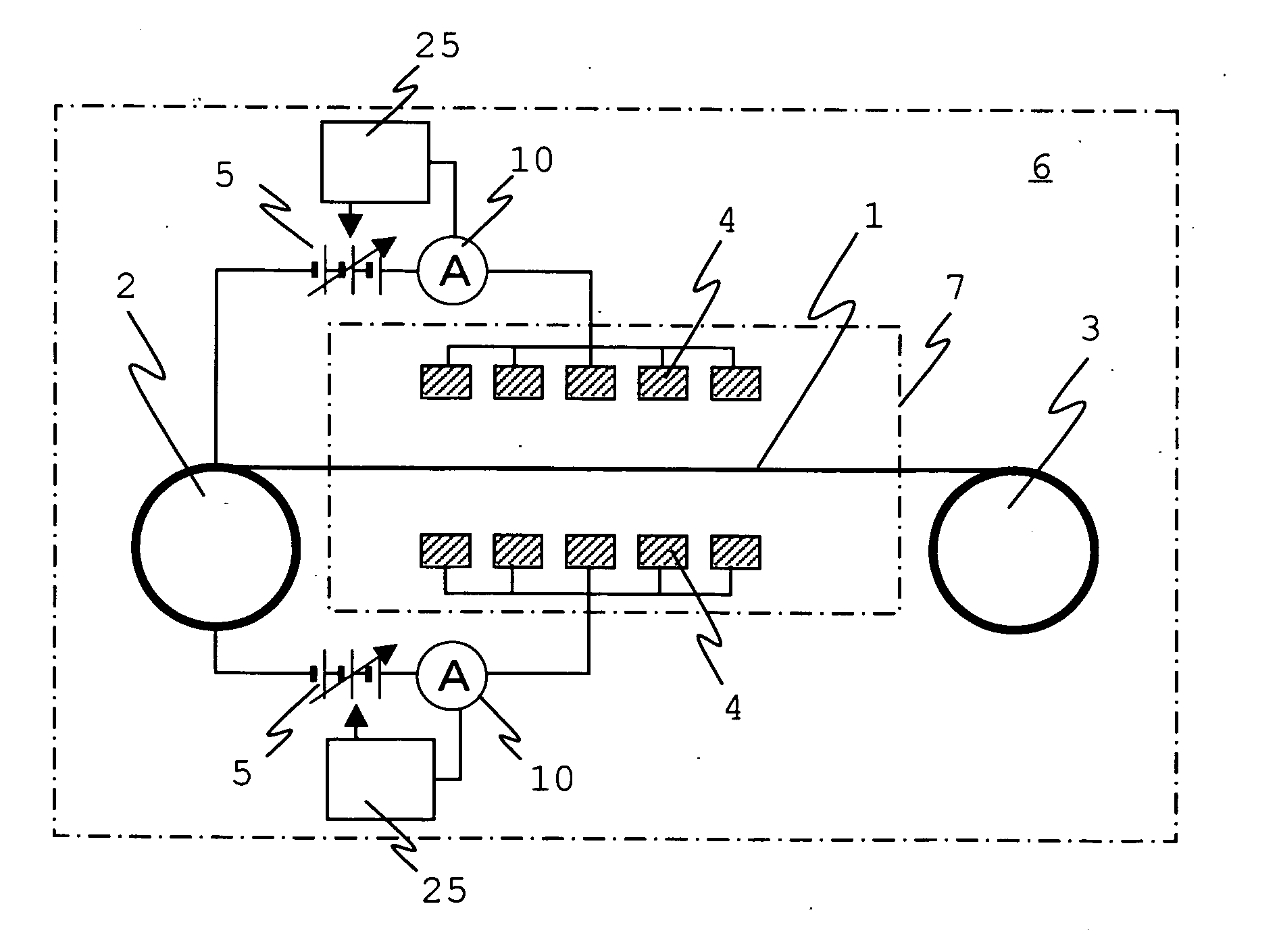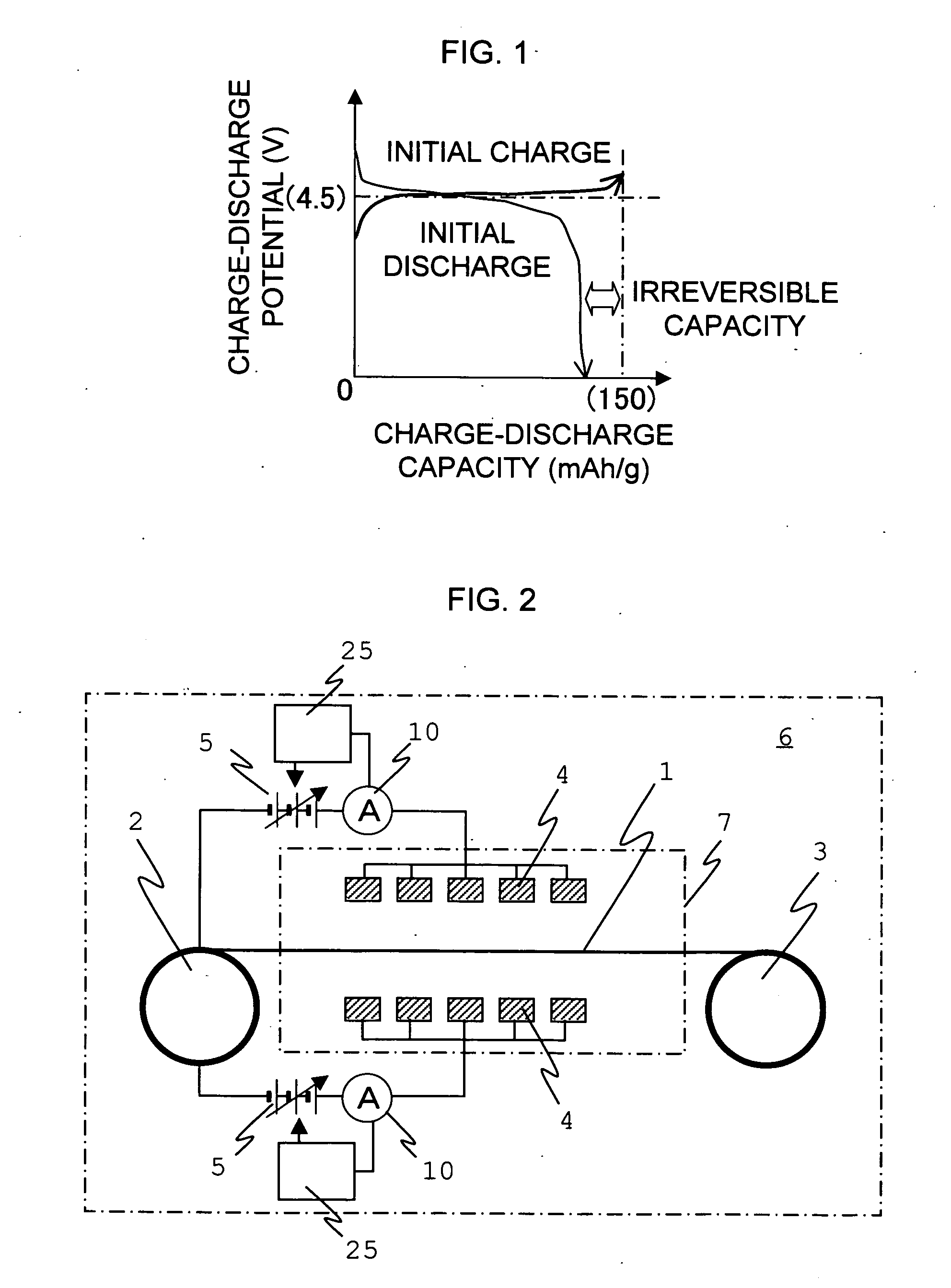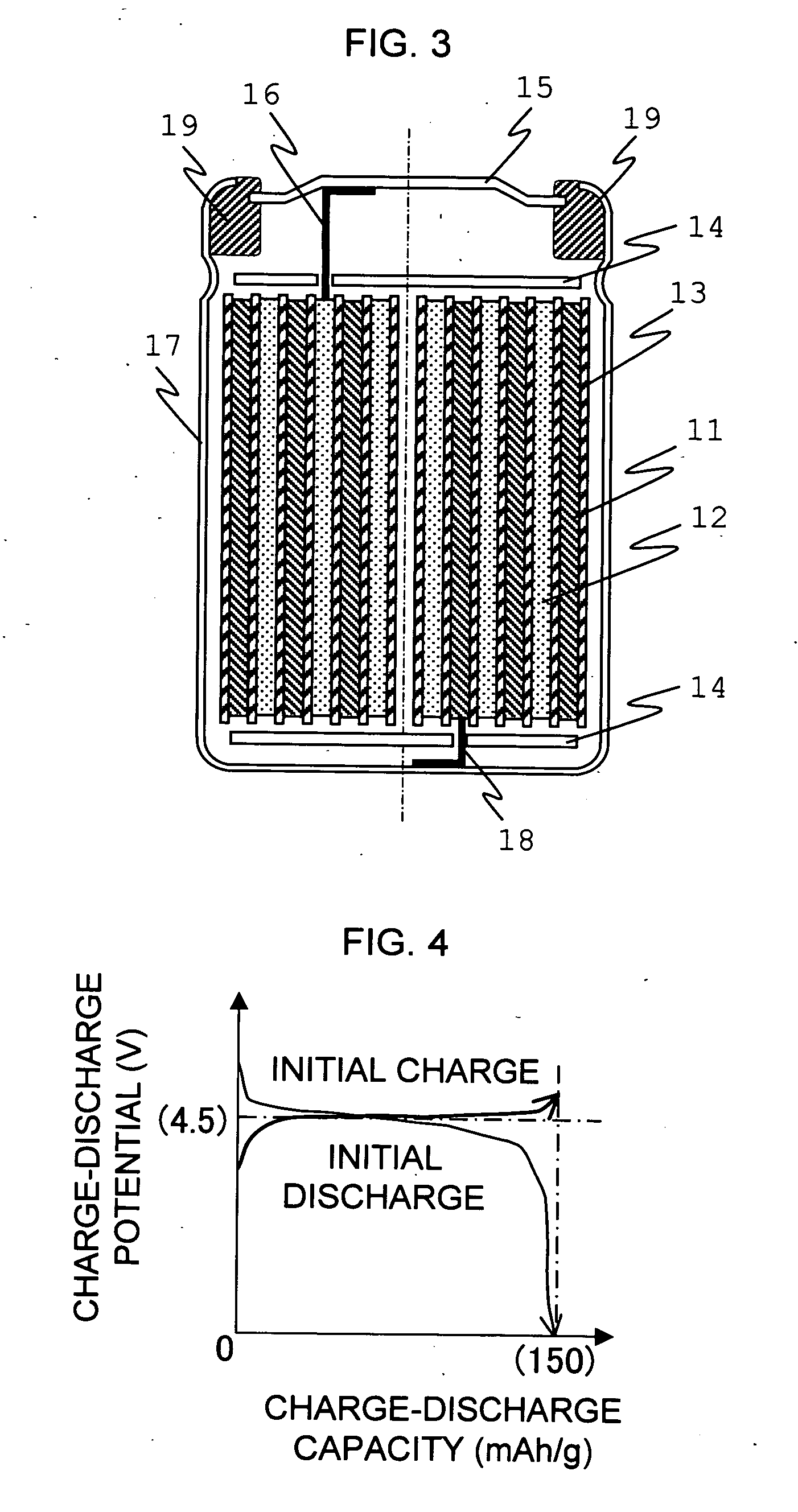Rechargeable lithium battery containing ion-irradiated carbonaceous material and production thereof
a lithium battery and carbonaceous material technology, applied in the direction of non-aqueous electrolyte accumulator electrodes, cell components, coatings, etc., can solve the problem of insufficient capacity, inability to have a higher capacity, and the theoretical upper limit of capacity of 372 mah/g, etc., to reduce irreversible capacity, reduce size and weight, and increase theoretical capacity
- Summary
- Abstract
- Description
- Claims
- Application Information
AI Technical Summary
Benefits of technology
Problems solved by technology
Method used
Image
Examples
first embodiment
[0026] In First Embodiment, the production method and configuration of the rechargeable lithium battery according to the present invention will be illustrated. As the anodic active material, a carbonaceous material that can be doped and dedoped with lithium is used. Such a carbonaceous material is prepared, for example, by carbonizing an organic raw material such as pitch, tar, cokes, woody materials, furan resins, phenol resins, cellulose, methane or propane at high temperatures. However, any other carbonaceous materials used in such rechargeable batteries can also be used. Each of these carbonaceous materials can be used alone or in combination.
[0027] The anodic active material is mixed with a binder such as poly(vinylidene fluoride) to form an anodic active carbonaceous material composition and is then dispersed in a medium such as N-methyl-2-pyrrolidone to yield a slurry thereof. The slurry of the anodic active carbonaceous material composition is applied to both sides of an an...
second embodiment
[0038] According to Second Embodiment, the rechargeable lithium battery of the present invention is produced by the method comprising the steps of applying lithium ions to a carbonaceous material in its production to thereby yield a carbonaceous material containing lithium ions; mixing the carbonaceous material containing lithium ions with a carbonaceous material containing no lithium ions to yield an anodic active carbonaceous material doped with lithium ions in an amount corresponding to the irreversible capacity; and forming an anode doped with lithium ions in an amount corresponding to an irreversible capacity using the lithium-doped anodic active material.
[0039]FIG. 5 illustrates an apparatus used in Second Embodiment, in which a carbonaceous material containing lithium ions is produced by applying lithium ions to a carbonaceous material in its production.
[0040] To produce a vapor-deposition carbonaceous material efficiently using the apparatus as shown in FIG. 5, a material ...
third embodiment
[0046] According to Third Embodiment, a carbonaceous material containing lithium ions is produced by applying lithium ions in the production of the carbonaceous material as in Second Embodiment, except that the apparatus used herein has different configurations of the tubular reactor 58 and the tubular lithium-ion irradiator 62.
[0047]FIG. 6 illustrates an apparatus used in Third Embodiment, in which a carbonaceous material containing lithium ions is produced by applying lithium ions to a carbonaceous material in its production. FIG. 7 is a sectional view of a dielectric-associated electrode 85 for high-pressure plasma discharge used in the apparatus of FIG. 6.
[0048] The contrast between FIG. 6 and FIG. 5 shows that the tubular reactor 58 according to Third Embodiment comprises an auxiliary electrode 66 at its center part and a dielectric-associated electrode 85 helically arranged in the inner periphery of the tubular reactor 58. In addition, a tungsten coil 84 is arranged, instead...
PUM
| Property | Measurement | Unit |
|---|---|---|
| thickness | aaaaa | aaaaa |
| width | aaaaa | aaaaa |
| voltage | aaaaa | aaaaa |
Abstract
Description
Claims
Application Information
 Login to View More
Login to View More - R&D
- Intellectual Property
- Life Sciences
- Materials
- Tech Scout
- Unparalleled Data Quality
- Higher Quality Content
- 60% Fewer Hallucinations
Browse by: Latest US Patents, China's latest patents, Technical Efficacy Thesaurus, Application Domain, Technology Topic, Popular Technical Reports.
© 2025 PatSnap. All rights reserved.Legal|Privacy policy|Modern Slavery Act Transparency Statement|Sitemap|About US| Contact US: help@patsnap.com



